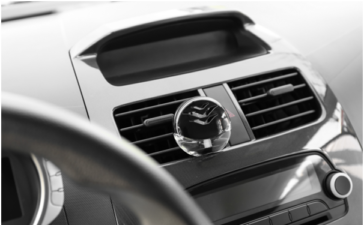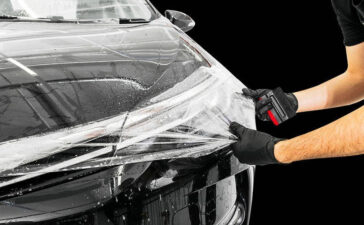Are you in the market shopping for auto insurance for your car? If so, it’s essential to understand the different types of insurance. There are also other factors you should consider when you go auto insurance shopping.
These factors include the type of insurance you want, your budget, and the right coverage based on your needs and car brand. These factors will help you find the best coverage for your vehicle.
Shopping for insurance is not an easy task, especially with so many options in the market today. Fortunately, we have provided you with important information below to help you have a smooth and seamless experience. Read on to learn.
1. Determine What Insurance You Need
There are many different types of vehicle insurance policies. The most common policies are liability coverage, collision, and comprehensive insurance policies. Most states in the U.S. require drivers to purchase liability insurance to meet the financial responsibility law in case of an accident.
You will also be legally required to have liability insurance to get and maintain a legitimate vehicle registration from the U.S. Department of Motor Vehicles. On the other hand, comprehensive and collision coverage will protect your car against physical damage.
Therefore, financial institutions and lenders will require you to purchase this coverage if you bought your car through a loan. Comprehensive and collision insurance protects your vehicle against theft, fire, accidental damage, or vandalism. While this coverage is a must-have when paying for your car through insurance, it’s not legally required by most states.
2. Collect the Necessary Documents
If you’re shopping for car insurance, you need to have the correct documents. Thankfully, today it’s easier than ever to shop for insurance policies. That’s because online comparison websites allow shoppers to compare different coverage and choose the best one.
Before you start the shopping process, ensure you collect the following information:
- Your full name and date of birth
- Your physical address
- VIN and vehicle mileage information
- Year of manufacture and make and model of the car
- Vehicle’s safety features
- Your license number
- Previous insurance coverage information
The above information will help you settle for the right insurance policy for your vehicle. Check the car to gather information related to mileage, safety features, and VIN. Additionally, ensure you share the driver’s licenses of every driver that will be operating the vehicle.
3. Choose the Best Method for Purchasing the Coverage
There are many different ways to shop for an auto insurance policy. However, the best method for you depends on your personal preference. You can purchase coverage through an insurer’s agent, an independent agent, or directly from the insurance company.
Each method has its advantages and disadvantages. An insurer’s agent, for instance, will be more familiar with their particular company’s policies. However, they only work for one company; hence, they lack variety.
On the other hand, an independent agent will have various options, giving you more flexibility than an insurer’s agent. However, they are considered to be brokers, and they may potentially add extra broker fees.
Buying directly from the insurance company is more convenient for some people, and it will help you avoid pressure from agents. However, it’s more footwork as you will need to go from one company’s website to the other comparing them.
4. Compare Different Insurance Companies
After choosing a suitable shopping method, it’s time to gather quotations from different providers. Check at least three carriers that you like and contact them for a quote. Different companies may have different prices.
Remember also to ask them what type of damages the stated price covers. Remember not to fall for the cheapest premium as it could be covering fewer damages.
5. Check if You Qualify for Any Discounts
Each company will have their own discounts depending on the time of year and the offers they have. Check whether you qualify for these discounts. Getting a discount is a great way to lower your insurance premiums.
Other additional ways of getting a lower insurance rate include:
- Installing an anti-theft device on your car
- Getting bundled plans
- Increase your deductibles
- Maintain a high credit score
- Compare different quotes
- Keep a clean record by taking a defensive driving class
Being a careful driver and having a clean driving record is a great way to lower your premiums. Insurance companies look at individual driving habits using telematics programs to determine how much premium you will pay. Additionally, paying a one-time rate upfront is a great way to reduce the amount you pay in insurance.
6. Consider Add-Ons With Your Insurance Policy
You should also consider other add-ons in addition to your primary insurance coverage. Add-ons provide you with extra coverage for specific purposes.
While these add-ons will increase your policy’s cost, they will give you more protection. Some examples of add-ons include:
- Roadside assistance
- Rental car coverage
- Glass protection insurance
These insurance add-ons help you get an extra layer of protection. For example, roadside assistance coverage will help you in case you get stranded.
On the other hand, glass protection is to help you cover any broken or cracked windows after an incident.
7. Consider Bundling Different Policies With One insurer
There are many benefits of bundling numerous policies with one insurance provider. For instance, if you have small business insurance, homeowner’s insurance, healthcare insurance, and now car insurance, you should check if you can purchase these covers from one company.
Some companies also offer discounts on family insurance plans and individual plans. Ensure you ask your insurer about the types of plans they have as it could save you some money.
Additionally, if this is your first time driving, ensure you check out car insurance for learner drivers for maximum protection.
Are You Ready To Go Auto Insurance Shopping?
Going auto insurance shopping doesn’t have to be a daunting and scary task. Different providers offer different auto insurance policies. Ensure you compare policies from your preferred company before settling on the best policy.
Follow the above step-by-step guide to help make the process smooth and seamless. If you’re looking for any additional information about insurance policies and other personal finance topics, check out other posts on our site.









